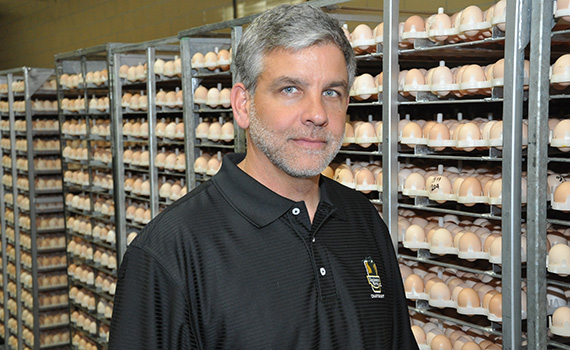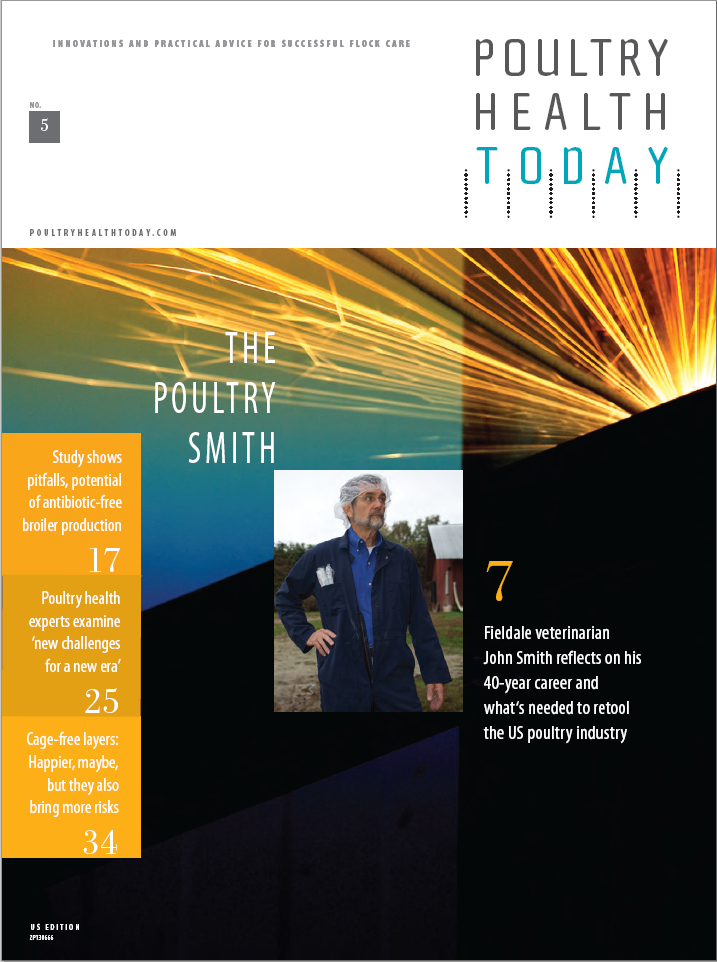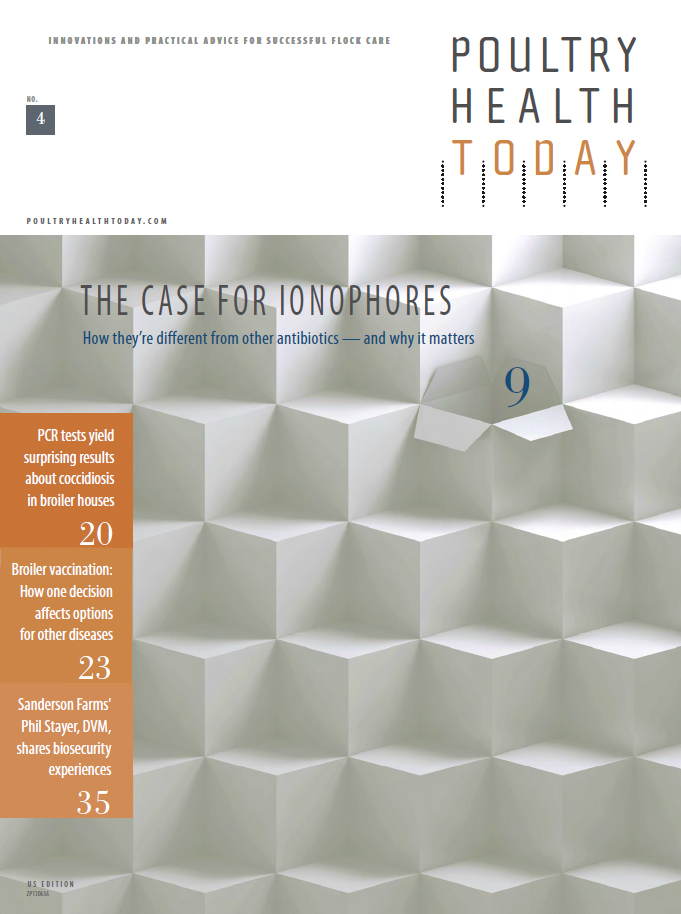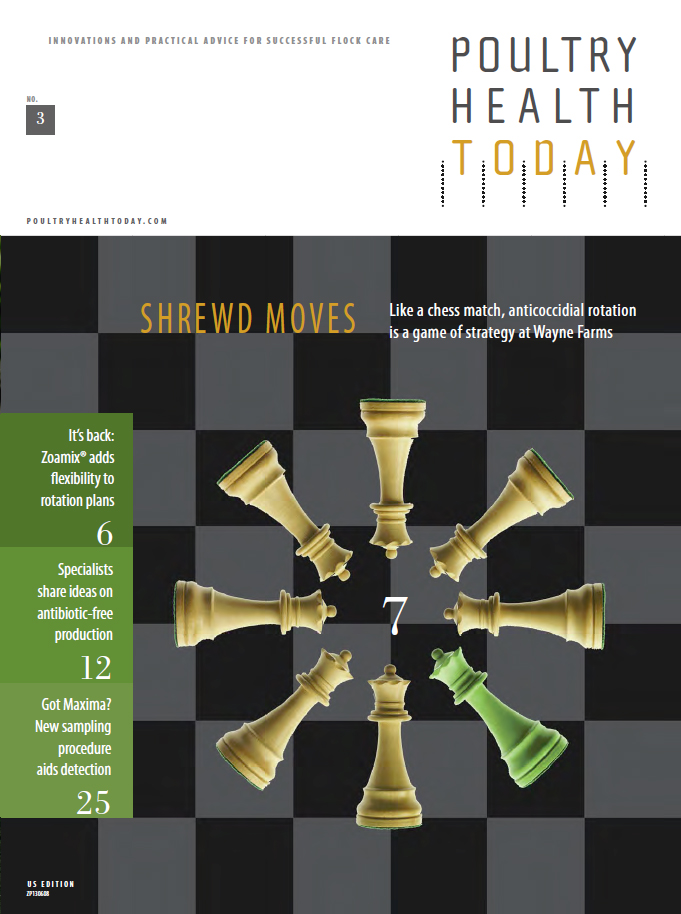

Breaches in biosecurity: Lessons learned

By Philip A. Stayer, DVM
Corporate Veterinarian, Sanderson Farms, Inc.
Biosecurity needs to take its rightful place as a top priority for poultry producers in light of the highly pathogenic avian influenza (HPAI) that’s currently affecting U.S. commercial poultry flocks.
We can define biosecurity as the procedures put in place to reduce the risk of disease in a population of animals. The best risk is no risk. But as we all know, just about every activity we perform on a poultry farm involves some risk, so the goal is to intelligently limit risks as best we can. This requires imagination to provide useful yet manageable practices that establish barriers between healthy flocks and possible disease reservoirs.
The HPAI situation provides a good example. We know that wild waterfowl carry HPAI, so to keep this disease off poultry farms, we have to limit contact with wild waterfowl and their droppings. Toward this end, we should prohibit farm personnel from hunting and handling waterfowl. We can help keep wild birds away by cleaning up spilled feed, keeping the grass mowed and eliminating standing water near poultry houses. We can require personnel to disinfect the bottoms of their shoes before entering a poultry house and that equipment rolled into a poultry house also be disinfected.
All commercial poultry companies, including Sanderson Farms, Inc., have some type of biosecurity program, often borrowed from a common source such as the National Chicken Council or primary breeder suppliers. At Sanderson, we have historically incorporated biosecurity procedures into our contract producer agreements and other corporate documents.
Unprotected knees cause outbreak
A case in point involved sporadic infectious laryngotracheitis (ILT) outbreaks in our flocks that ultimately resulted in the depopulation of over 700,000 birds. As we all know, ILT is a devastating disease. It starts with upper-respiratory-tract damage and often leads to the death of the infected chickens. The disease has to be reported in every poultry-producing state, so it carries more weight than routine issues with other ubiquitous respiratory diseases. After each ILT clinical case at Sanderson, our veterinary staff conducted on-site investigations to determine the source of the virus and to adjust biosecurity procedures. We didn’t want to live up to the old adage that “idiocy is to expect a different result from similar behavior.”
Before 2009, our broiler personnel were simply required to wear protective overshoes without any other biosecurity measures. In contrast, biosecurity requirements were more stringent for personnel working with breeding stock, our most valuable asset. Breeder service technicians have always been covered from head to toe with overclothes to assure they didn’t introduce disease agents.
In the spring of 2009, however, ILT affected our western-most broiler flocks in east Texas. Upon investigation, our veterinary staff determined the disease was introduced by a basic violation of the existent biosecurity program. The index case was attributed to a contract chicken grower who had processed non-company poultry at his chicken farm. ILT was traced to a Canton, Texas, trade-day, where ILT-vaccinated broilers from Arkansas were sold. The trail of ILT-infected backyard flocks followed major highways west until the last known positive flock was found north of Waco. Apparently, one of these ILT-infected flocks was processed by our grower. The farmer with the index case frequently visited family and friends who were also Sanderson contract growers and, in the process, spread ILT to several other nearby broiler farms.
Soon after the index case, another cluster of farms about 1.5 miles away broke with ILT. The only link between the two ILT areas was a Sanderson service technician. After questioning the technician and examining the affected farms, we figured out that he had carried the virus from one place to another on his unprotected knees. The index farm and all the houses in the secondary cluster had back-up thermostats inside the houses at birds’ head height. The service person had to kneel to inspect and check back-up thermostats.
This ILT disaster taught us that all broiler service personnel need to wear clean protective coveralls and head nets, just like their counterparts who care for breeder stock.
Litter hauling linked to ILT
In late January 2011, there was an ILT outbreak in southeastern Mississippi that affected Sanderson as well as other integrator farms. Our index case was on an older farm with a new owner. The previous owner was also a contract litter hauler and moved poultry litter from farms to fields. Although he’d sold the farm, he maintained ownership of the old litter stockpiled in a shed at the end of the property. To pick up the litter, the previous owner had to drive between houses 3 and 4.
The previous owner started hauling the old litter at the same time the new owner was battling gangrenous dermatitis (GD) in house 3 and was in the house frequently to pick up dead birds. Ten days after the GD outbreak started, birds in the house broke with ILT. In this case, we figured out the new owner was picking up the virus from the path the litter hauler used, then carried it into the house to a flock already weakened by GD.
Earlier that winter, ILT had been spreading in north Alabama; the previous owner denied moving litter from Alabama into Mississippi, but the genotype of the Mississippi ILT virus was identical to the one in Alabama. Due to this case, Sanderson now prohibits off-farm litter-handling equipment on any of our farms if flocks are present.
Problem neighbors
Just last year, in spring 2014, we experienced an ILT outbreak in North Carolina, east of where ILT traditionally occurs. Three of our broiler farms were affected. The initial case was due to an obvious breach of existing biosecurity. As a favor on the way home from work, an equipment serviceman stopped by house 2 on the first affected farm to examine reports of faulty roll-seal doors. The serviceman didn’t have any protective equipment in his vehicle, nor did the grower have any spare gear to provide. Exactly 10 days after the repairman’s visit, birds near the roll-seal door in house 2 broke with ILT.
The cause of ILT on the other two affected farms wasn’t as readily apparent. Both farms have long farm lanes and aren’t close to other poultry farms. The only link to the first case was the serviceman, but his travel pattern didn’t match up with the ILT breaks on the other two farms.
Further investigation revealed the source was likely vehicle tires. A neighbor integrator in the area had flocks with ILT, and vehicles from Sanderson contract farms used the same route the neighbor integrator used to transport dead birds.
Realizing that we can’t change a neighbor’s behavior, our veterinary staff instead increased our own biosecurity. We now routinely require that tires and the undercarriage of service vehicles be disinfected before entering one of our farms and that service technicians disinfect their shoe soles before they get into their vehicles. We require the same for growers and their vehicles if there’s a disease threat situation.
Steps to take when outbreak strikes
These three cases demonstrate how biosecurity needs to evolve. There are six steps that can help poultry producers with the “production epidemiology” that’s needed when a disease outbreak occurs:
- Have someone knowledgeable visit each affected farm and talk to all folks working there about the chain of events.
- Attempt to construct a reasonable story about how the pathogen gained entrance onto the farm.
- Identify breaches or deficiencies in current biosecurity practices.
- Plug the holes in biosecurity that are identified.
- Have managers and veterinarians inspect what’s needed to ensure the proper biosecurity procedures are in place.
- Finally, share the lessons learned with others so they can avoid making the same biosecurity mistakes.
Hopefully, the experiences at Sanderson that I’ve shared in this article will help other poultry producers improve their biosecurity procedures and prevent devastation from ILT and other serious diseases such as HPAI.
More Issues












